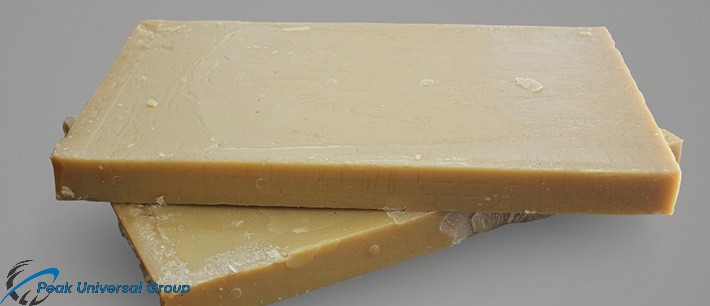
Paraffin for Microcrystalline Wax Manufacturing: An In-Depth Exploration
Microcrystalline wax is a high-value petroleum, derived wax widely used in adhesives, rubber, cosmetics, food packaging, pharmaceuticals, and industrial applications. Although it differs significantly in structure and properties from paraffin wax, paraffin plays an essential upstream role in the process of manufacturing microcrystalline wax.
In this comprehensive blog, we will explore its process of manufacturing from paraffin, discuss its applications and benefits, and highlight why Peak Universal is the premier supplier for high-quality products.
(Dewaxing of lubricating oils, Separation of Paraffin Wax, Crystallization and Filtration, Solvent Extraction, Final Refining and Purification)
How Paraffin is Involved in Microcrystalline Wax Production
A. Shared Origin: Crude Oil Fractionation
Both paraffin wax and microcrystalline wax originate from petroleum refining, specifically from the lubricating oil fraction obtained during vacuum distillation of crude oil.
-
Paraffin wax typically comes from distillate lubricating oil fractions.
-
Microcrystalline wax comes from residual lubricating oil fractions (heavier waxy residues).
Because the two are produced from different cuts but from the same refining process, paraffin is an important upstream material and often a byproduct stream when producing microcrystalline wax.
Paraffin as a Feedstock Component
Although microcrystalline wax is not manufactured solely from paraffin, paraffin wax:
1. Acts as a Partial Feedstock
Some refining facilities blend paraffinic fractions with heavier vacuum residues to optimize yield and improve filtration properties during dewaxing.
2. Contributes to Hydrocarbon Pool
Paraffin contributes shorter, straighter-chain hydrocarbons (C20–C40) that mix with branched and ring-structured hydrocarbons, forming the initial wax blend before deoiling.
3. Helps Adjust Processing Behavior
Refiners sometimes add controlled quantities of paraffin to:
-
Improve crystallization behavior
-
Modify wax hardness
-
Enhance filtration during solvent dewaxing
-
Lower the viscosity of the waxy feed
This makes downstream deoiling more efficient.
Properties of Microcrystalline Wax
It has distinct properties that differentiate it from paraffin and make it suitable for various applications:
- Higher Melting Point: It has a higher melting point compared to paraffin, making it suitable for high-temperature applications.
- Toughness and Flexibility: It is tougher and more flexible than paraffin, providing better durability and resistance to cracking.
- Adhesive Properties: It has superior adhesive properties, making it ideal for use in adhesives, coatings, and sealants.
- Oil Retention: It has a higher capacity to retain oil, which enhances its lubricating and moisture-retentive properties.
- Opacity and Gloss: It provides a high level of opacity and gloss, enhancing the aesthetic appeal of products.
Why Microcrystalline Wax Is Different from Paraffin Wax
Although both start from similar petroleum fractions, they differ in structure:
Paraffin Wax
-
Long, straight-chain hydrocarbons
-
Larger, well-defined crystals
-
Melting point: 50–65°C
-
Hard, brittle texture
Microcrystalline Wax
-
Branched, cyclic hydrocarbons
-
Very small, fine crystals
-
Melting point: 60–90°C
-
Flexible, tacky, more adhesive
The heavier, more complex hydrocarbon fractions that contain paraffin act as a base but undergo additional refining to produce microcrystalline wax.
Applications & Uses
It is used in a wide range of industries due to its unique properties. Some of its primary applications include:
Cosmetics and Personal Care Products
It is a key ingredient in various cosmetics and personal care products, such as lipsticks, creams, and lotions. Its emollient properties provide smooth texture and consistency, while its adhesive qualities enhance the longevity and stability of these products.
Pharmaceuticals
In the pharmaceutical industry, It is used as a coating agent for tablets and capsules, providing a protective barrier against moisture and environmental factors. It also serves as a binding agent in ointments and creams, ensuring consistent and effective formulations.
Packaging and Coatings
It is widely used in packaging and coatings to provide moisture resistance and improve the durability of products. It is used in food packaging, industrial coatings, and protective wraps, offering excellent barrier properties and enhancing product shelf life.
Adhesives and Sealants
Its adhesive properties make it an essential component in various adhesives and sealants. It is used in hot melt adhesives, pressure-sensitive adhesives, and sealing compounds, providing strong bonding and flexibility.
Tire and Rubber Industry
In the tire and rubber industry, it is used as a processing aid and anti-ozonate additive. It improves the mixing and moulding of rubber compounds, enhances the durability of tires, and protects against ozone and environmental degradation.
Candle Manufacturing
It is used in candle manufacturing to improve the texture, burn quality, and appearance of candles. It provides a higher melting point and better scent retention, resulting in longer lasting and more aesthetically pleasing candles.
Importance of Paraffin in Microcrystalline Wax Manufacturing
✔ Enhances filtration during dewaxing
Paraffin improves crystallization, making separation more efficient.
✔ Improves yield control
By adjusting paraffin-to-residue ratio, refiners optimize microcrystalline wax production.
✔ Contributes to uniform hydrocarbon structure
A consistent feedstock ensures predictable melting point, color, and oil content.
✔ Reduces processing costs
Better crystallization reduces solvent usage and filtration time.
Industrial Significance
Paraffin remains essential in industrial wax refining because:
-
It provides balancing control in feedstock composition.
-
Facilities processing both wax types can maximize efficiency and minimize waste.
-
Paraffin cycles through upstream refining streams, enabling controlled production of microcrystalline wax grades.
Refineries often operate integrated systems where paraffin feedstock optimization directly impacts the quality and cost efficiency of microcrystalline wax output.
Peak Universal Business: Your Trusted Microcrystalline Wax
Supplier
Choosing Its right supplier is essential for ensuring the quality and reliability of your products. Peak Universal Business is a leading supplier in the industry, known for its commitment to excellence and customer satisfaction. Here’s why Peak Universal stands out:
Quality Assurance
Peak Universal Business adheres to stringent quality control measures, ensuring that every batch of its products meet or exceeds industry standards. Their state-of-the-art testing facilities and experienced technicians guarantee the consistency and performance of their products.
Wide Range of Products
In addition to this, Peak Universal Business offers a comprehensive range of waxes and related products. This extensive portfolio allows customers to find the perfect solution for their specific needs.
Reliable Supply Chain
With a robust supply chain network, Peak Universal Business ensures timely delivery of microcrystalline to customers worldwide. Their efficient logistics and distribution systems minimize downtime and keep projects on schedule.
Technical Support
Peak Universal Business provides expert technical support to assist customers with product selection, application techniques, and troubleshooting. Their team of professionals is always ready to offer guidance and solutions tailored to individual project requirements.
Sustainability Commitment
As a responsible supplier, Peak Universal Business is dedicated to sustainable practices in the production and distribution of microcrystalline. They continuously invest in research and development to improve the environmental impact of their operations and offer eco-friendly alternatives.
Prospects for Microcrystalline Wax
The future of microcrystalline in various industries looks promising, with continuous advancements in formulation and application techniques. As manufacturers seek innovative ways to improve product quality and performance, the demand for high-quality microcrystalline wax is expected to grow.
Peak Universal Business remains at the forefront of these advancements, continually refining their products and services to meet the evolving needs of the industry.
Conclusion- Paraffin for Manufacturing Microcrystalline
In conclusion, microcrystalline wax is an indispensable material in many industries, offering numerous benefits that enhance product performance and quality.
By partnering with Peak Universal Business, you can ensure the success and longevity of your projects. Their expertise, quality assurance, reliable supply chain, and commitment to sustainability make them the ideal choice for all your microcrystalline wax needs.
Trust Peak Universal Business to provide the high-quality microcrystalline wax solutions required for your next manufacturing endeavor.
You can Read More about Wax products Here:
Microcrystalline Wax & its use in Industries
What is Microcrystalline wax and its uses & benefits
Microcrystalline Wax uses & Applications in Plastic Industry
Read More about Microcrystalline Wax
How Heavy Slack wax 2-5% Oil Content is manufactured?
Paraffin for Manufacturing Microcrystalline Wax, Process of Manufacturing Microcrystalline Wax, Separation of Paraffin Wax, Properties of Microcrystalline Wax
If You have any other Query or Question you want to ask, Please don’t hesitate to Contact Us.
- 0 comment
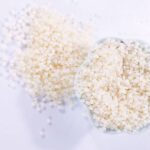
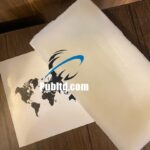
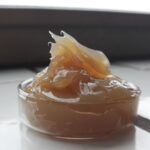
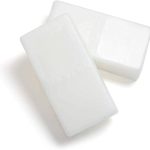
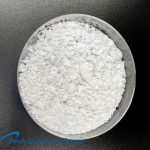
Leave a Reply